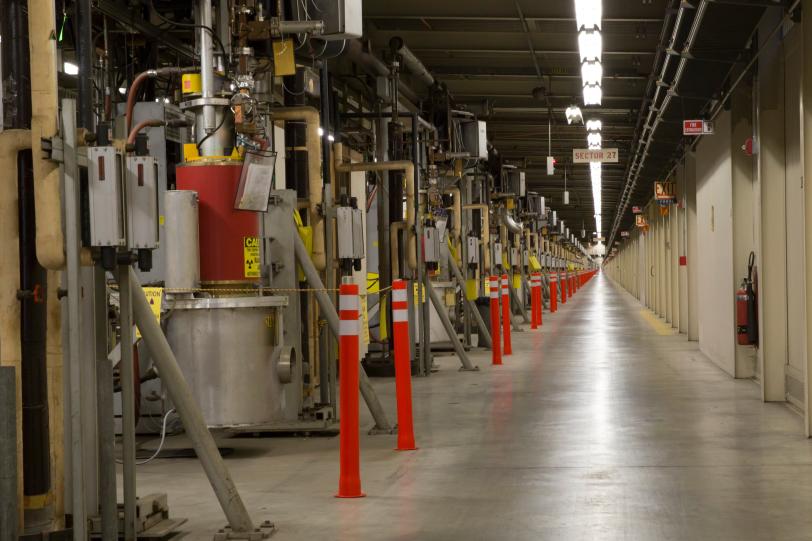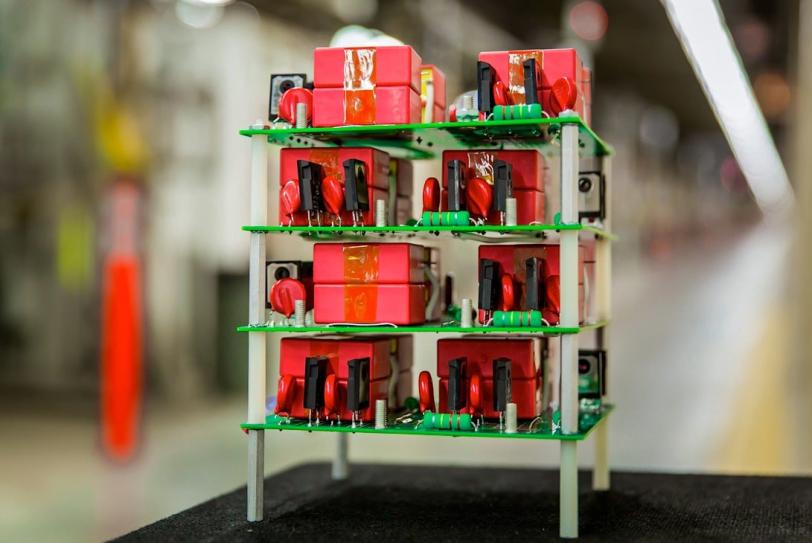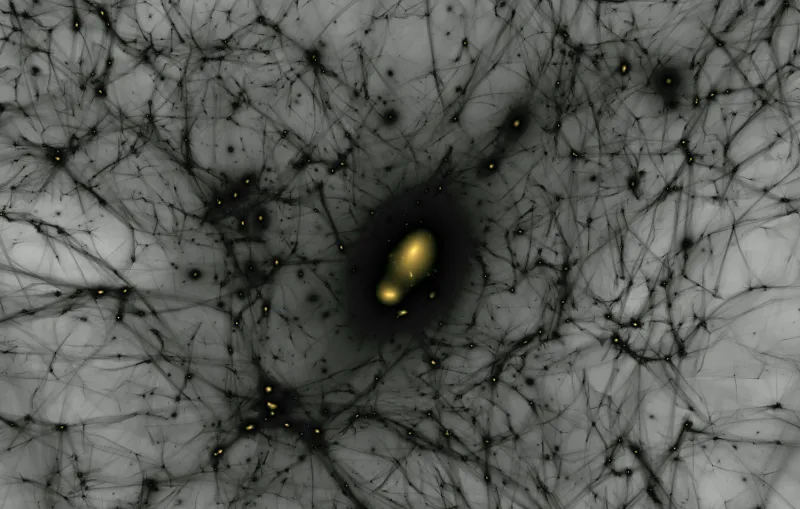SLAC Partners with Palo Alto Firm to Make Klystrons Much More Efficient
New ‘GREEN-RF’ Technology Recycles Energy that Would Otherwise Go to Waste in Accelerating Particles for Science, Medicine, Industry
By Glennda Chui
Researchers at the Department of Energy’s SLAC National Accelerator Laboratory are working with a major manufacturer to make klystrons – big vacuum tubes that generate microwaves for accelerating particles – much more energy efficient.
The new technology, called GREEN-RF, could dramatically cut the cost of operating both big research accelerators, like the 2-mile-long behemoth at the heart of SLAC, and smaller commercial versions used in medicine, communications, industry and defense. It does this by capturing the energy wasted in generating one pulse of microwaves and recycling it to help generate the next pulse.
With a $2 million DOE grant, SLAC is working with Communications & Power Industries (CPI) to apply the technology to two klystrons: a 5.5-megawatt CPI tube and a 65-megawatt 5045 SLAC tube, the type used for large-scale physics experiments.
A Dramatic Leap in Efficiency
The researchers estimate that the technology could increase klystron efficiency from 45 percent today to 70 percent or more. This could translate to hundreds of thousands of dollars in savings per year for enormous accelerators and X-ray light sources, which can eat up 40 percent of a laboratory’s power budget. Such a big leap in efficiency could help national labs meet the goal of reducing greenhouse gas emissions from federal research facilities to 28 percent below 2008 levels by 2020.
But for now the project is primarily aimed at improving the efficiency of commercial klystrons. It’s being funded by the DOE’s Accelerator Stewardship program, which supports accelerator research and development not just for basic science, but for society as a whole. An estimated 30,000 particle accelerators are in use around the world in medicine, industry, energy and environmental applications, national security and other areas.
“The efficiency technique that will be employed will apply to a variety of our products, from industrial accelerators used to kill bacteria in food to radar and communications systems and accelerators used in cancer treatment,” said Peter Kolda, business development manager for the Microwave Power Products Division at CPI, which is based in Palo Alto. “The collaboration between SLAC and CPI is just starting to grow, and we’re really excited about bringing these technologies into the marketplace.”
How GREEN-RF Works
GREEN-RF – short for Generator for Recovering Energy from RF – was invented by Mark Kemp, a staff scientist in the lab’s Technology Innovation Directorate (TID). RF stands for “radiofrequency,” a band of electromagnetic wavelengths, including microwaves, that’s used for applications such as wireless communications, radar and cooking food.
To understand GREEN-RF, it helps to look at how two pieces of equipment – modulators and klystrons – join forces to accelerate particles.
First, the modulator converts electricity from a wall plug into a high-voltage pulse that flows into the klystron. The klystron generates an electron beam, and then converts it into microwave pulses. Those pulses are channeled into an accelerator, where they boost particles to high energies for physics experiments, cancer treatments and so on.
But this process is inefficient. Only half of the energy in klystron's internal electron beam is converted to microwaves; the rest is wasted as heat.
GREEN-RF harvests more than 60 percent of that leftover beam energy, converts it back to electrical current and channels it back into the modulator to help generate the next microwave pulse.
A Simple, Modular Solution
The same technology can also potentially capture and recycle energy from other points in the process, such as RF energy reflected from the accelerator or heat from cooling water, Kemp said. “It’s like collecting gray water from showers and sinks and using it to water your garden,” he said, “or like the regenerative braking system in an electric car, which converts kinetic energy from braking into a form that can be used by the battery.”
The GREEN-RF system itself is simple and completely passive, with no moving parts to wear out, Kemp said. It consists of some modifications to the klystron and an additional box of equipment no bigger than a two-drawer filing cabinet. So there’s no need to buy new klystrons or modulators, which can cost up to half a million dollars apiece; when an existing klystron fails, as they occasionally do, it can be replaced with a refurbished model that incorporates GREEN-RF, so the accelerator gradually becomes more efficient.
He added that other energy-saving technologies now under development at SLAC could combine with GREEN-RF to make klystrons even more energy efficient.
The SLAC research team, led by TID engineers Erik Jongewaard, Andy Haase and Aaron Jensen, has demonstrated the technology on a small, bench-top model of a klystron. Now they’re designing a bigger version for a commercial CPI klystron. “We’re jointly designing it, they will fabricate it and we will test it here,” Kemp said. “If everything goes as planned it will become a catalog item for them and they can sell it to their customers.” The final phase of the project will be devoted to doing the same for the bigger SLAC klystron that’s used for research.
Designing, building and operating klystrons and other RF devices for particle acceleration is one of SLAC’s core areas of expertise. CPI also has a longstanding connection to these devices: The company is a spinoff of Varian Associates, which was founded in 1948 by Russell and Sigurd Varian, inventors of the klystron. The company recently collaborated with SLAC to adapt the lab’s XL5 klystron for commercial production.
For questions or comments, contact the SLAC Office of Communications at communications@slac.stanford.edu.
SLAC is a multi-program laboratory exploring frontier questions in photon science, astrophysics, particle physics and accelerator research. Located in Menlo Park, Calif., SLAC is operated by Stanford University for the U.S. Department of Energy's Office of Science.
SLAC National Accelerator Laboratory is supported by the Office of Science of the U.S. Department of Energy. The Office of Science is the single largest supporter of basic research in the physical sciences in the United States, and is working to address some of the most pressing challenges of our time. For more information, please visit science.energy.gov.







